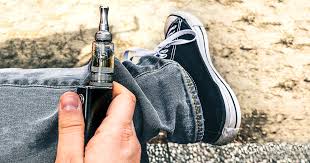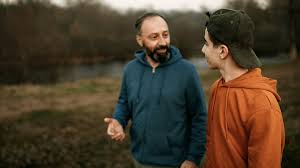
INDIANA— According to Indiana Public Radio, in October 2023, nine percent of all Indiana youth said they had used e-cigarettes in the past month. And in 11th and 12th grade, nearly 20 percent of students said they had been vaping within the month.

Vaping or using e-cigarettes is an epidemic that has led to children as young as elementary age experimenting with them. Often, misinformation makes vaping sound less dangerous than traditional cigarettes. However, facts show this is not true.
The key to preventing vaping in children and adults is education. When we know better, we do better. Essential facts to communicate include the following, found at the Tobacco Education Resource Library:
- Most e-cigarettes contain nicotine. Children and teens often believe e-cigarettes do not contain any nicotine but instead just the flavor juice. This myth is used to make e-cigarettes appear more “healthy” than regular cigarettes. The fact is, most e-cigarettes not only contain nicotine, but the website notes that vapes, especially one Juul pod, can contain as much nicotine as an entire pack of cigarettes.
- By heating the ingredients, e-cigarettes create an aerosol that is inhaled. Some of the ingredients include not only nicotine but also nickel, lead, tin, aluminum, and even formaldehyde. Formaldehyde is one of the chemicals used when embalming a deceased person to preserve the body.
- Introducing such chemicals at a young age increases the risk of addiction to not only e-cigarettes but also to other drugs. The child and teen brain are still developing and forming numerous connections. The introduction of such chemicals makes the brain feel dependent on these chemicals.
In addition to educating your child about the real risks of e-cigarettes, there are other steps you can take to help curtail vaping. Be aware of behaviors that may indicate your child is using e-cigarettes. According to the Massachusetts Center for Adolescent Wellness, such behaviors might include increased thirst, nose bleeds, smell like mint, candy, or fruit, agitation, anxiety, impatience, secrecy, or an increased need for privacy.

When discussing vaping with your child, the American Lung Association recommends the following considerations:
- Put yourself in your child’s shoes. Consider the pressure and social environment they encounter daily, and remember what that felt like when you were their age.
- Please remind your child that you are on their side without judgment or frustration. If they feel judged, a child may react defensively or tune you out completely. An open discussion is the best approach to a positive outcome.
- Find the right time and place. Choose a calm moment where vaping is already at the top of your mind, like when you’re driving past a vape shop or your child is attending an event with friends. This will help you guide the conversation and discuss vaping without defensiveness.
- Practice having this conversation with a partner or trusted friend, and go through the points you feel are most important to communicate. Anticipate how the conversation will go, and prepare to respond to your child calmly and respectfully. This will also encourage them to come to you with problems in the future.
If you discover that your child is vaping, contacting your pediatrician or family doctor to evaluate the level of use and possible addiction may be necessary. Often, vaping is not discovered until some time has passed. If an addiction has formed, stopping without medical guidance may be difficult or even medically unsafe.
Keeping communication open and available without lecturing is essential. Parents need children and teens to understand the dangers of e-cigarettes. Children and teens need parents to understand the pressures of engaging in using e-cigarettes. When both parties are willing to listen and understand the other, chances of prevention increase.

Sara Wilson, MSW, LSW, is a Youth First Mental Health Professional. Youth First, Inc., is a nonprofit dedicated to strengthening youth and families. Youth First provides over 100 highly trained mental health professionals (primarily master’s level social workers), prevention programs, parent engagement coordinators, and bilingual support personnel to 126 schools across 14 Indiana counties. Over 52,000 youth and families yearly are served by Youth First’s school-based social work and community programs that promote mental health, prevent substance misuse, and maximize student success. To learn more about Youth First, visit youthfirstinc.org or call 812-421-8336.








.png)











